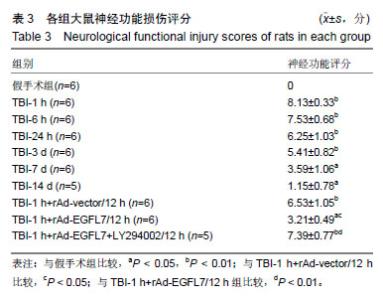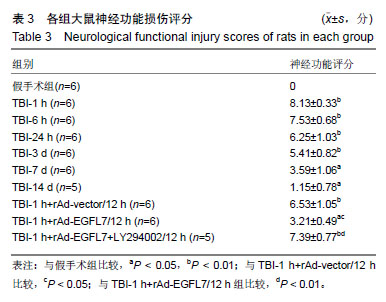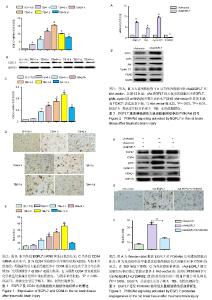| [1]Galgano M, Toshkezi G, Qiu X, et al. Traumatic brain injury: current treatment strategies and future endeavors. Cell Transplant. 2017;26(7):1118-1130.[2]Pearn ML, Niesman IR, Egawa J, et al. Pathophysiology associated with traumatic brain injury: current treatments and potential novel therapeutics. Cell Mol Neurobiol. 2017;37(4): 571-585.[3]Galgano M, Toshkezi G, Qiu X, et al. Traumatic Brain Injury: Current Treatment Strategies and Future Endeavors. Cell Transplant. 2017;26(7):1118-1130.[4]Ramjiawan RR, Griffioen AW, Duda DG, et al. Anti-angiogenesis for cancer revisited: is there a role for combinations with immunotherapy? Angiogenesis. 2017;20(2): 185-204.[5]Usuba R, Pauty J, Soncin F, et al. EGFL7 regulates sprouting angiogenesis and endothelial integrity in a human blood vessel model. Biomaterials. 2019;197:305-316.[6]Nichol D, Stuhlmann H. EGFL7: a unique angiogenic signaling factor in vascular development and disease. Blood. 2012;119(6):1345-1352.[7]Pannier D, Philippin-Lauridant G, Baranzelli MC, et al. High expression levels of egfl7 correlate with low endothelial cell activation in peritumoral vessels of human breast cancer. Oncol Lett. 2016;12(2):1422-1428.[8]Gong C, Fang J, Li G, et al. Effects of microRNA-126 on cell proliferation, apoptosis and tumor angiogenesis via the down-regulating ERK signaling pathway by targeting EGFL7 in hepatocellular carcinoma. Oncotarget. 2017;8(32): 52527-52542.[9]Tang H, Xiao WR, Liao YY, et al. EGFL7 silencing inactivates the Notch signaling pathway; enhancing cell apoptosis and suppressing cell proliferation in human cutaneous melanoma. Neoplasma. 2019;66(2):187-196.[10]De MA, Parker L, Van DS, et al. Egfl7, knockdown causes defects in the extension and junctional arrangements of endothelial cells during zebrafish vasculogenesis. Dev Dyn. 2010;237(3):580-591.[11]Noorolyai S, Shajari N, Baghbani E, et al. The relation between PI3K/AKT signalling pathway and cancer. Gene. 2019;698:120-128.[12]Kanaizumi H, Higashi C, Tanaka Y, et al. PI3K/Akt/mTOR signalling pathway activation in patients with ER-positive, metachronous, contralateral breast cancer treated with hormone therapy. Oncol Lett. 2019;17(2):1962-1968.[13]Stumpf M, Blokzijlfranke S, Hertog JD. Fine-tuning of pten localization and phosphatase activity is essential for zebrafish angiogenesis. PLoS One. 2016;11(5):e0154771.[14]Zhao J, Zhang ZR, Zhao N, et al. VEGF silencing inhibits human osteosarcoma angiogenesis and promotes cell apoptosis via PI3K/AKT signaling pathway. Cell Biochem Biophys. 2015;73(2):519.[15]Bertrand-Duchesne MP, Grenier D, Gagnon G. Epidermal growth factor released from platelet-rich plasma promotes endothelial cell proliferation in vitro. J Periodontal Res. 2010; 45(1):87-93.[16]Li Q, Wang AY, Xu QG, et al. In-vitro inhibitory effect of EGFL7-RNAi on endothelial angiogenesis in glioma. Int J Clin Exp Pathol. 2015;8(10):12234.[17]徐新,高伟伟,吕莉,等.小鼠颅脑创伤模型的构建及运动功能评估[J].中华实验外科杂志,2016,33(1):252-255.[18]Tu XK, Yang WZ, Chen JP, et al. Repetitive ischemic preconditioning attenuates inflammatory reaction and brain damage after focal cerebral ischemia in rats: involvement of pi3k/akt and erk1/2 signaling pathway. J Mol Neurosci. 2014; 55(4):912-922.[19]Leinhase I, Rozanski M, Harhausen D, et al. Inhibition of the alternative complement activation pathway in traumatic brain injury by a monoclonal anti-factor B antibody: a randomized placebo-controlled study in mice. J Neuroinflamm. 2007;4:13.[20]Xiang ZL, Zeng ZC, Fan J, et al. Gene expression profiling of fixed tissues identified hypoxia-inducible factor-1α, VEGF, and matrix metalloproteinase-2 as biomarkers of lymph node metastasis in hepatocellular carcinoma. Clin Cancer Res. 2011;17(16):5463. [21]Higgins GA, Georgoff P, Nikolian V, et al. Network reconstruction reveals that valproic acid activates neurogenic transcriptional programs in adult brain following traumatic injury. Pharm Res. 2017;34(8):1658-1672.[22]Guo S, Zhen Y, Wang A. Transplantation of bone mesenchymal stem cells promotes angiogenesis and improves neurological function after traumatic brain injury in mouse. Neuropsychiatr Dis Treat. 2017;13:2757-2765.[23]Loane DJ, Kumar A. Microglia in the TBI brain: the good, the bad, and the dysregulated. Exp Neurol. 2016;275 Pt 3: 316-327.[24]Prasad SB, Yadav SS, Das M, et al. Down regulation of FOXO1 promotes cell proliferation in cervical cancer. J Cancer. 2014;5(8):655-662.[25]Xing YQ, Li A, Yang Y, et al. The regulation of FOXO1 and its role in disease progression. Life Sci. 2018;193:124-131.[26]Kaur C, Sivakumar V, Zhang Y, et al. Hypoxia-induced astrocytic reaction and increased vascular permeability in the rat cerebellum. Glia. 2010;54(8):826-839.[27]Tang Y, Zhang Y, Zheng MW, et al. Effects of treadmill exercise on cerebral angiogenesis and MT1-MMP expression after cerebral ischemia in rats. Brain Behav. 2018,(4):e01079.[28]Xu Y, Zhang G, Kang Z, et al. Cornin increases angiogenesis and improves functional recovery after stroke via the Ang1/Tie2 axis and the Wnt/β-catenin pathway. Arch Pharm Res. 2016;39(1):133-142.[29]Chakraborty A, Chatterjee M, Twaalfhoven H, et al. Vascular endothelial growth factor remains unchanged in cerebrospinal fluid of patients with Alzheimer’s disease and vascular dementia. Alzheimers Res Ther. 2018;10(1):58.[30]Zhu X, Park J, Golinski J, et al. Role of Akt and mammalian target of rapamycin in functional outcome after concussive brain injury in mice. J Cereb Blood Flow Metab. 2014;34(9): 1531-1539. |



